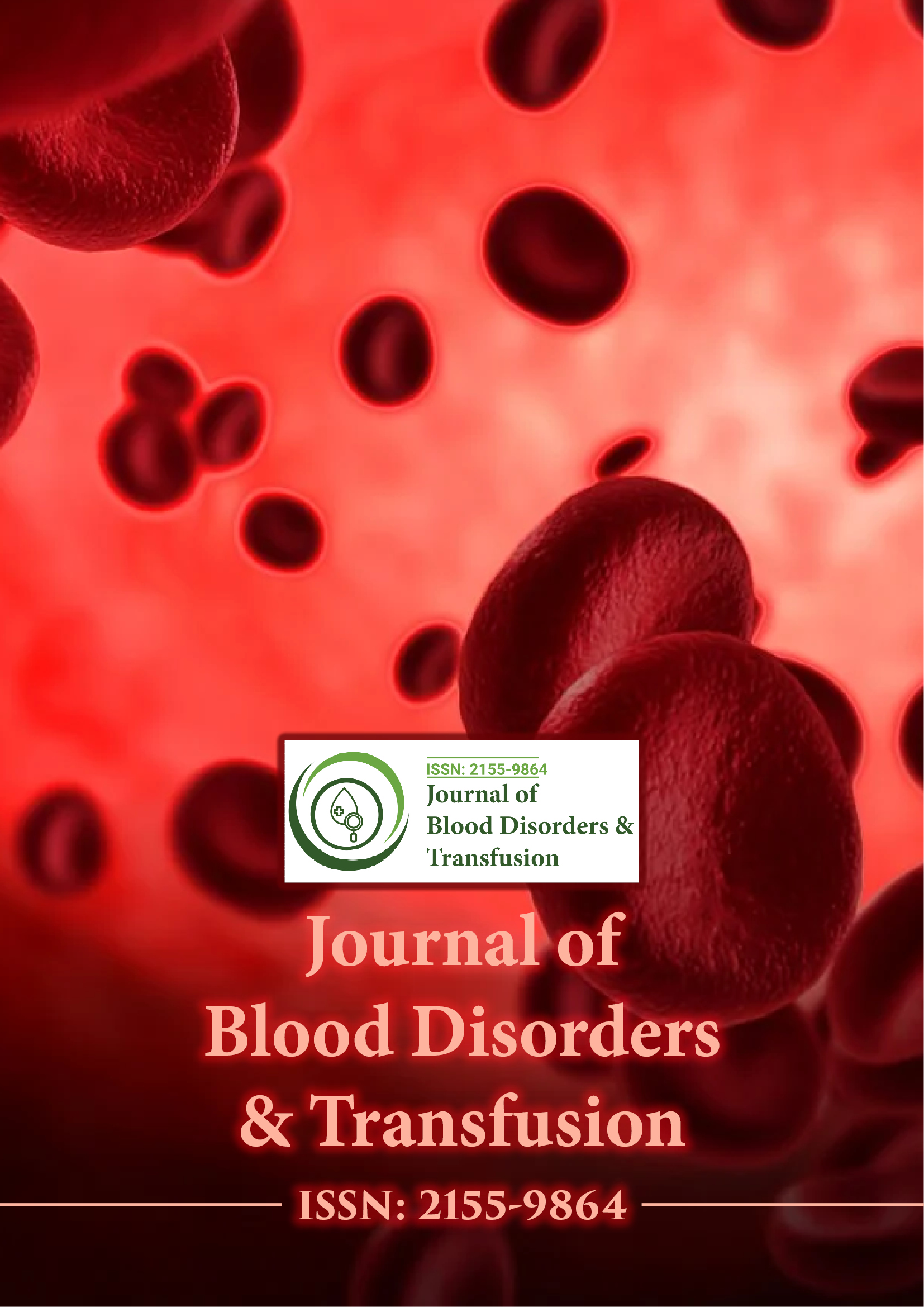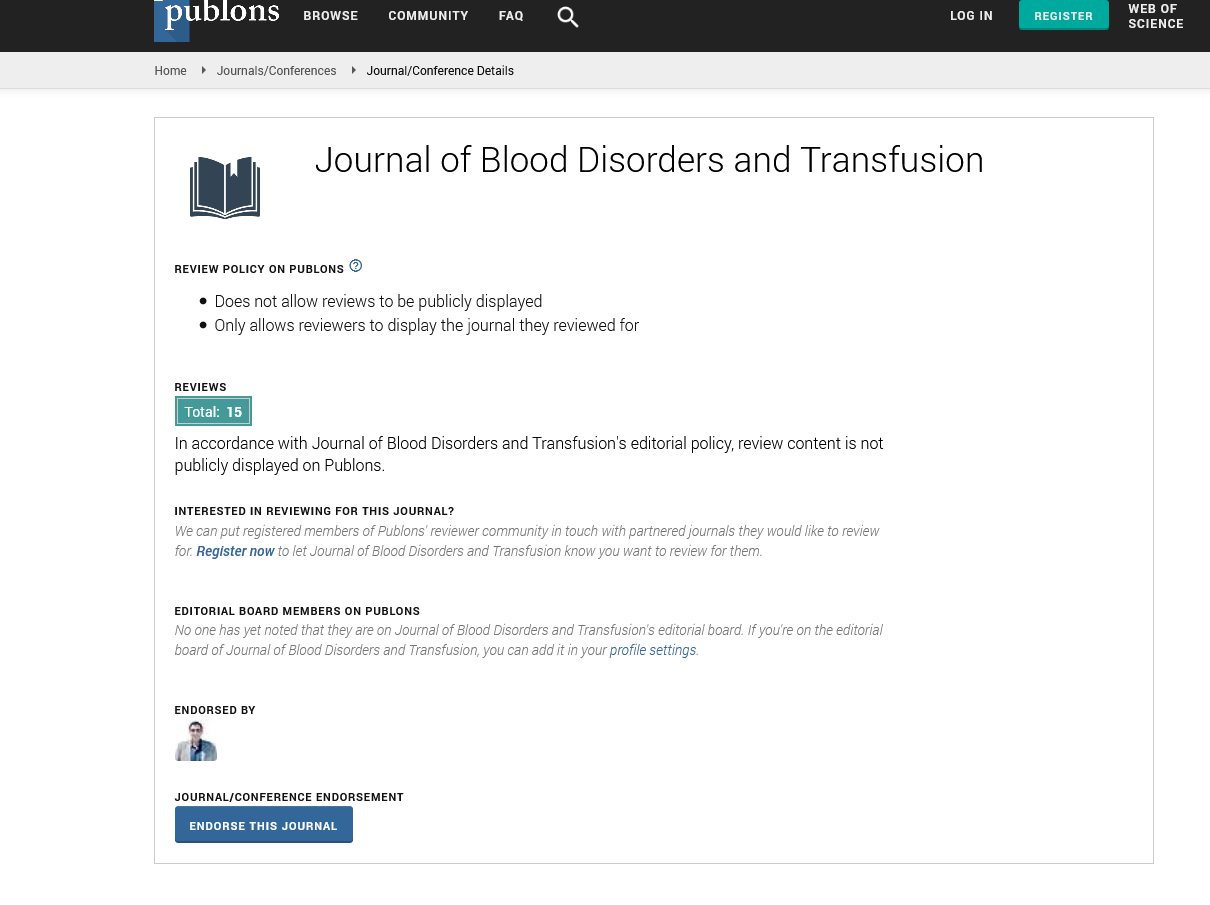Indexed In
- Open J Gate
- Genamics JournalSeek
- JournalTOCs
- Ulrich's Periodicals Directory
- RefSeek
- Hamdard University
- EBSCO A-Z
- OCLC- WorldCat
- Proquest Summons
- Publons
- Geneva Foundation for Medical Education and Research
- Euro Pub
- Google Scholar
Useful Links
Share This Page
Journal Flyer

Open Access Journals
- Agri and Aquaculture
- Biochemistry
- Bioinformatics & Systems Biology
- Business & Management
- Chemistry
- Clinical Sciences
- Engineering
- Food & Nutrition
- General Science
- Genetics & Molecular Biology
- Immunology & Microbiology
- Medical Sciences
- Neuroscience & Psychology
- Nursing & Health Care
- Pharmaceutical Sciences
Perspective - (2025) Volume 16, Issue 3
Clinical Features of Leukemia Presenting with Hypereosinophilia
Tina Zayas*Received: 28-Apr-2025, Manuscript No. JBDT-25-28996; Editor assigned: 01-May-2025, Pre QC No. JBDT-25-28996 (PQ); Reviewed: 15-May-2025, QC No. JBDT-25-28996; Revised: 22-May-2025, Manuscript No. JBDT-25-28996 (R); Published: 29-May-2025, DOI: 10.4172/2155-9864.25.16.619
Description
B-Lymphoblastic Leukemia/Mymphoma (B-ALL/LBL) is a malignant disorder characterized by the clonal proliferation of immature B-cell precursors, known as lymphoblasts. This disease commonly affects children but can also present in adults. One distinct cytogenetic subtype of B-ALL is hyperdiploid B-ALL, which is defined by the presence of more than 50 chromosomes in the leukemic cells. Hyperdiploidy is often associated with favorable prognosis compared to other genetic abnormalities in B-ALL.
A rare clinical presentation of B-ALL/LBL includes the presence of hypereosinophilia and minimal peripheral blood lymphoblasts. This combination may delay diagnosis due to the atypical blood findings and can complicate clinical management. This article aims to explore the characteristics, diagnosis, pathogenesis and treatment considerations of hyperdiploid B-lymphoblastic leukemia/lymphoma accompanied by hypereosinophilia and a paucity of circulating lymphoblasts.
Clinical presentation
Patients with Hyperdiploid B-ALL/LBL usually present with symptoms related to bone marrow failure such as anemia, thrombocytopenia and neutropenia. However, when hypereosinophilia occurs alongside this subtype, the clinical picture can be more complex.
In cases where circulating lymphoblasts are very few or absent, diagnosis may be delayed as the typical signs of leukemia, such as blasts in peripheral blood, are not prominent. Patients might present primarily with symptoms from eosinophilic organ involvement, such as cardiac or pulmonary complications, rather than classical leukemia symptoms.
Pathogenesis and cytogenetics
Hyperdiploidy in B-ALL: Hyperdiploid B-ALL is characterized by leukemic cells with 51 to 67 chromosomes, often including gains of chromosomes 4, 10 and 17. The presence of these extra chromosomes contributes to leukemogenesis by affecting gene dosage and altering regulatory pathways involved in cell proliferation and apoptosis.
Lack of peripheral blasts: The absence or low number of circulating lymphoblasts may result from preferential localization of leukemic cells within the bone marrow and extramedullary tissues such as lymph nodes, spleen, or other organs. This pattern can be explained by altered adhesion molecule expression or chemokine receptor profiles on leukemic blasts, influencing their trafficking and retention.
Diagnostic challenges
The diagnosis of Hyperdiploid B-ALL/LBL with hypereosinophilia and minimal circulating blasts requires a high index of suspicion. Peripheral blood smears may show pronounced eosinophilia but few blasts, misleading clinicians to consider eosinophilic disorders unrelated to leukemia.
Bone marrow examination: Bone marrow aspiration and biopsy remain essential for diagnosis. The bone marrow typically demonstrates increased lymphoblasts consistent with B-cell lineage by morphology and immunophenotyping. Flow cytometry confirms the immunophenotype showing expression of markers such as CD19, CD10, TdT and others characteristic of precursor B cells.
Cytogenetic and molecular testing: Chromosomal analysis and fluorescence in situ hybridization (FISH) are critical to identify hyperdiploidy and rule out other recurrent genetic abnormalities. Molecular studies may help detect fusion transcripts or mutations that contribute to eosinophilia.
Differential diagnosis: The differential diagnosis includes other causes of hypereosinophilia such as hypereosinophilic syndrome, parasitic infections, allergic diseases and myeloid neoplasms with eosinophilia. The lack of circulating blasts necessitates thorough marrow analysis to avoid misdiagnosis.
Clinical management
The treatment approach to hyperdiploid B-ALL/LBL with hypereosinophilia follows standard protocols for B-ALL, including induction chemotherapy to achieve remission, consolidation and maintenance therapy. However, the presence of hypereosinophilia requires additional considerations.
Chemotherapy: Standard B-ALL regimens include combinations of corticosteroids, vincristine, anthracyclines and asparaginase. Hyperdiploid B-ALL generally responds well to these therapies. Monitoring bone marrow response is essential, particularly given the low peripheral blast count.
Management of hypereosinophilia: Hypereosinophilia may cause organ damage, requiring supportive measures such as corticosteroids to reduce eosinophil levels quickly. In cases of severe cardiac or pulmonary involvement, targeted therapies or interventions may be necessary.
Monitoring and prognosis: Regular assessment of blood counts, bone marrow status and molecular markers guides therapy. Hyperdiploid B-ALL patients typically have better survival rates than those with other genetic subtypes. However, hypereosinophilia and atypical presentations may complicate prognosis.
Hyperdiploid B-lymphoblastic leukemia/lymphoma presenting with hypereosinophilia and very few circulating lymphoblasts is a rare but significant clinical entity. It poses diagnostic challenges due to atypical peripheral blood findings but requires prompt recognition to initiate effective therapy. Integration of bone marrow studies, cytogenetics and immunophenotyping is essential for accurate diagnosis. Current treatments focus on established B-ALL chemotherapy protocols, with additional attention to managing eosinophil-related complications. Ongoing research aims to improve understanding of the disease biology and enhance patient outcomes.
Citation: Zayas T (2025). Clinical Features of Leukemia Presenting with Hypereosinophilia. J Blood Disord Transfus. 16:619.
Copyright: © 2025 Zayas T. This is an open-access article distributed under the terms of the Creative Commons Attribution License, which permits unrestricted use, distribution, and reproduction in any medium, provided the original author and source are credited.

